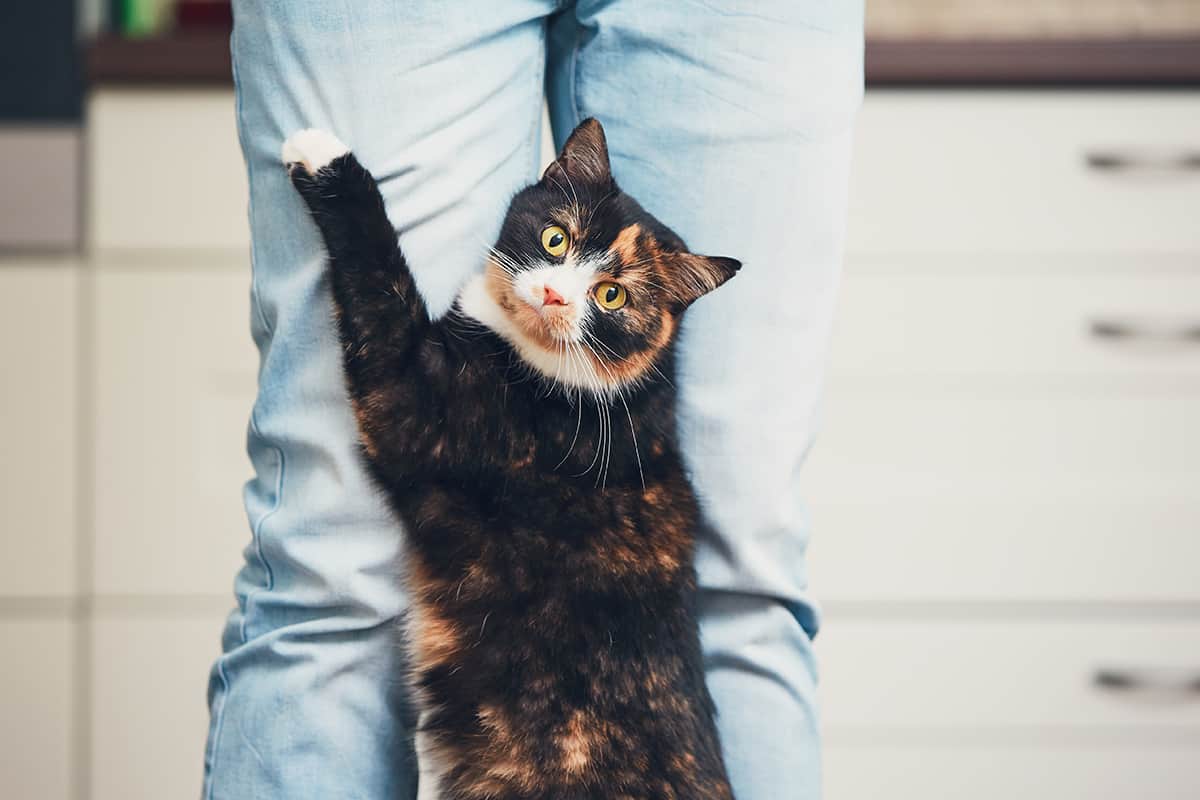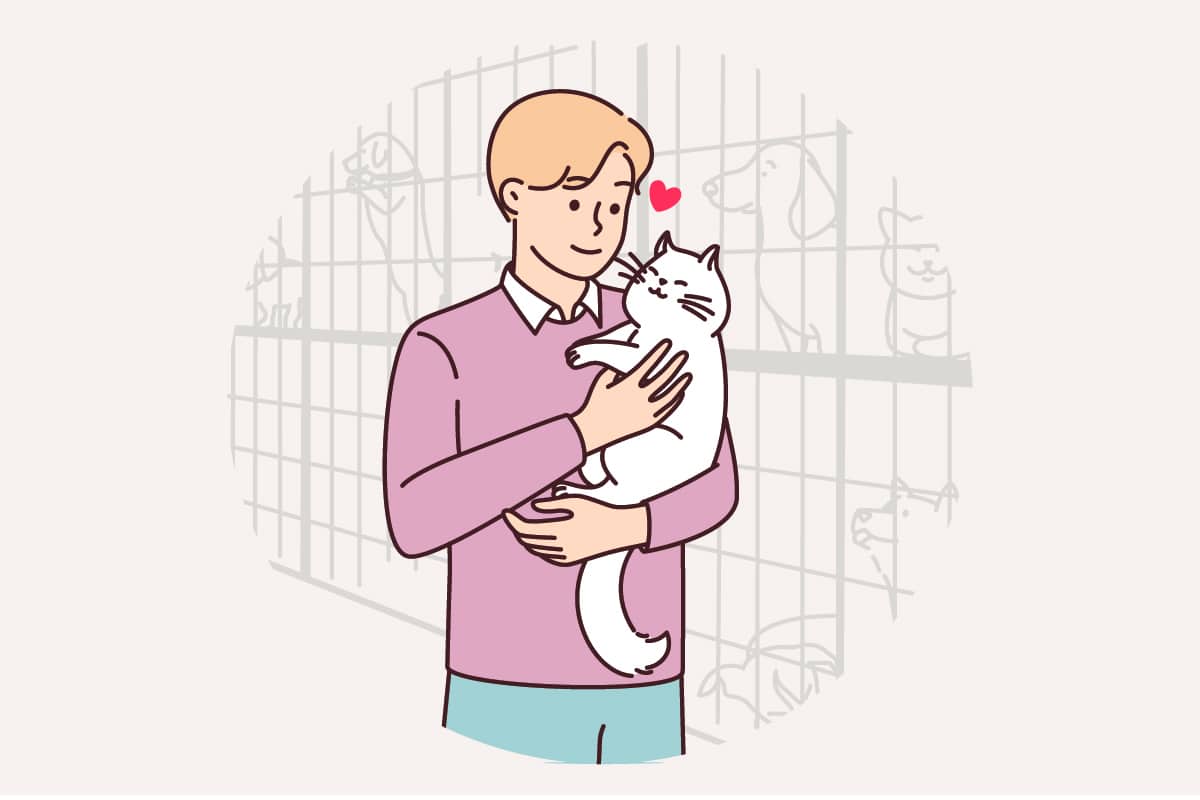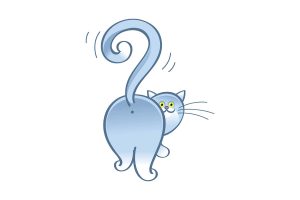Cats have their unique way of expressing love, often leaving us guessing. Unlike dogs with their wagging tails and slobbery kisses, cats are more like the cool kids of the pet world, showing affection on their own terms. But once you crack their code, you’ll find that cats are incredibly loving.
Cats show affection to humans through purring, head-butting, slow blinking, and even bringing you “gifts.” These gestures, each with its own sweet meaning, reveal their trust and comfort in your presence.
This guide will unpack the subtle ways your cat says “I love you.” We’ll explore what these gestures mean and how you can show love in return.
How Do Cats Show Affection to Humans?

“What on Earth are you trying to say?!” This is a sentence you’ve probably told your cat countless times after seeing it do all sorts of wacky things. Cats have their own special way of showing affection, and knowing the signals can turn you into a veritable cat whisperer.
1. Physical Signs of Cat Affection
Cats might not send you flowers or write love letters, but there are physical signs that your cat loves and adores you.
- Purring
That soft, rhythmic sound that seems to say, “All is right in my world.” When your cat curls up in your lap and purrs away, it’s a clear sign they feel safe and loved around you. But remember, cats can also purr when they’re in pain or anxious.
- Head-Butting
Does your cat ever come up to you and gently press their head against yours? That’s not just a casual hello—it’s a form of affection known as head-butting or bunting. They’re essentially marking you with their scent and claiming you as their own. It might not sound like it, but this is good news!
- Slow Blinking
Slow blinking in the cat world is equivalent to a heart emoji. When your cat looks at you and blinks slowly, it’s a sign of trust and affection. You can slow blink back to return the sentiment.
- Tail Wrapping
When your cat wraps its tail around your leg or arm, it’s like giving you a furry hug. It’s their way of expressing comfort and trust. So, the next time you get a tail hug, know that you’re in the inner circle.
- Kneading
Kneading is when your cat pushes their paws in and out against a soft surface (often you). This behavior stems from kittenhood, where kneading was a way to stimulate milk flow from their mother. When they knead you, it’s a sign that they see you as a comforting figure.
- Grooming You
If your cat licks you, you’re officially part of the pride. Grooming is a social bond between cats, and by extending this behavior to you, they’re showing affection and accepting you as one of their own. Plus, it’s a free spa treatment, courtesy of your cat.
2. Behavioral Indicators of Affection

Physical signs are pretty easy to catch, especially when you’re the target of their affection. However, there are behavioral signs that indicate your cat does more than tolerate your presence.
- Following You Around
If your cat follows you from room to room, it’s not just because they think you’re about to open a can of tuna. Whether you’re heading to the kitchen or the bathroom, if you’ve got a furry shadow, congratulations, you’re loved.
- Bringing Gifts
Has your cat ever placed a dead rat or bird on your front doorstep? This may not be the love letter you were hoping for, but from a cat’s point of view, it sort of is. It’s the ultimate sign of affection and perhaps a hint that you could brush up on your hunting skills, especially if the “gift” is still alive!
- Showing Their Belly
When a cat shows you their belly, it’s the feline equivalent of a trust fall. This vulnerable position means they feel safe and comfortable around you. It’s best to appreciate your cat in this position rather than engage with it physically. We’ll talk more on this topic in a bit.
3. Vocalization and Affection
Even though humans and cats don’t generally speak the same language, the sounds your cat makes through its mouth can reveal a lot about how it feels about you.
- Meowing
Cats generally meow more at humans than they do at other cats. If your cat meows at you, it’s their way of initiating a conversation. The tone, volume, and frequency can all be clues into how they’re feeling or what they want.
- Chirping or Chattering
Ever heard your cat make a weird chirping or chattering sound, especially while bird watching? This behavior indicates excitement and, interestingly, a desire to share that excitement with you. It’s a moment of bonding over the little things in life.
Is Your Cat Sending Mixed Signals?
Now, here’s something cat parents want to know about: mixed signals from their pets. One minute they’re all cuddles and purrs, and the next, you’re getting the cold shoulder. So, what gives?
1. The Belly Trap

The classic belly display looks like an open invitation for belly rubs but venture in at your own risk. This is the ultimate mixed signal. Showing their belly is a sign of trust, but it’s not always a green light for a belly rub.
Cats have sensitive stomachs, and this move might just be their way of saying, “I trust you,” and not “Please touch my belly.” So, how do you navigate this furry minefield? Look for other cues: relaxed posture, slow blinking, and a calm tail. When in doubt, opt for a chin scratch instead.
2. The Love Bite

Your cat gently nibbles on you, and you think, “Aw, love bites!” But then, ouch! That one was a bit harder. Cats use biting as a form of communication, from playful nips to more assertive bites signaling they’ve had enough.
The key is to understand the context. Gentle bites during a relaxed petting session are usually signs of affection, but always watch for signs of overstimulation, such as twitching tails or flattened ears. With cats, it’s all about consent.
3. The Tail Twitch

A gently swaying tail might mean they’re content, but a rapidly twitching tail? Not so much. It’s their way of displaying irritation or overstimulation. Observing your cat’s tail can clue you in about their mood, which helps you respond appropriately to avoid miscommunications.
4. The Midnight Zoomies
Ever been jolted awake by your cat sprinting across the bed at 3 AM? Welcome to the world of the midnight zoomies. It might seem like a plea for attention, but it’s usually just your cat’s natural instinct to release pent-up energy.
Engaging in regular play sessions during the day can help minimize nocturnal activities, but let’s be honest, the midnight zoomies can be pretty entertaining. That is, unless you’re trying to sleep!
FAQs
1. Are there less traditional ways cats show affection to humans?
Absolutely! Cats have their own quirky ways of showing love. Ever had your cat bring you their favorite toy or sit on your laptop while you’re working? Another less traditional sign is sleeping on your clothes. It might be inconvenient, but it’s their way of cuddling up to your scent when you’re not around.
2. Is it normal for a cat’s affection levels to change over time?
It’s pretty normal for a cat’s affection to ebb and flow, just like human moods do. Factors like age, health, and changes in the environment can all play a part. A previously cuddly kitten might become a bit more independent as they grow up, or they might seek out more cuddles as they get older and crave comfort.
3. Can I train my cat to be more affectionate?
You can’t exactly train a cat to be more affectionate, but you can encourage affectionate behavior. Regular, gentle playtime, speaking softly, and respecting their space can make them feel more comfortable and likely to show affection. Treats work wonders too, but the real secret is patience and a lot of love.





